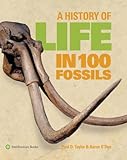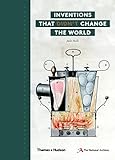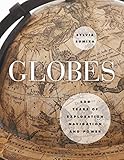 I’ve got my conference roadtrip routine dialed in. This spring I drove to the Northeast Natural History Conference (215 miles each way), the Northeast Alpine Stewardship Gathering (150 miles), the University of Maine Climate
I’ve got my conference roadtrip routine dialed in. This spring I drove to the Northeast Natural History Conference (215 miles each way), the Northeast Alpine Stewardship Gathering (150 miles), the University of Maine ClimateCategory Archives: Book Review
Book Review: The Feather Thief
 I’ve got my conference roadtrip routine dialed in. This spring I drove to the Northeast Natural History Conference (215 miles each way), the Northeast Alpine Stewardship Gathering (150 miles), the University of Maine Climate
I’ve got my conference roadtrip routine dialed in. This spring I drove to the Northeast Natural History Conference (215 miles each way), the Northeast Alpine Stewardship Gathering (150 miles), the University of Maine ClimateWe Sell Our Attention Too Cheaply
The message of Tim Wu’s The Attention Merchants is that we should more carefully consider what we get in return when we let companies sell our eyeballs to advertisers. In fact most we don’t consider it at all. If I’ve failed to turn off Twitter or my mail app while working, inevitably, barely thinking about it, I click away from the task at hand to quickly check my inbox or Twitter feed. I’m lured away from productive work by something that is literally optimized to capture my attention.
In the case of Twitter, as all of us these days are aware, the salable product isn’t the app, it’s your attention. Twitter, Facebook, Google, LinkedIn, Instagram, are nominally free because these companies are what Tim Wu calls attention merchants, capturing your mental space and selling it to advertisers. In exchange, we get pretty good free email, a way to stay in touch with old high school friends, and a chance to argue politics with idiotic strangers who we’ll never meet in real life.
The attention merchant model isn’t new – Wu traces it back to the first tabloids in New York, which sold their papers below cost, hoping to make money through advertisers. To make this business model work, tabloids like the New York Sun were the Buzzfeeds of their day, trafficking in the 19th century equivalent of clickbait.
In the case of Gmail or Facebook, yeah, we know they’re selling our data, but we think the trade is worth it. The same is true with broadcast TV: the Superbowl is free to watch, and in exchange, we sit through some high-budget, clever ads. What’s not to like about this deal?
Wu argues however that we’re selling ourselves too cheaply. Without blinking an eye, we let advertisers vie for our attention in our most personal and protected spaces: our homes, our bedrooms, our schools. At one time, as Wu documents, the idea that one would let a stranger pitch a sale to the family sitting around the dinner table was outrageous. No longer, as we eat in front of our TV’s and phones.
Not only have the attention merchants completely invaded every last corner of our personal space, but their business imperatives have also distorted the content we get. We think we get a great app or great TV shows in exchange for looking at a few ads. Wu shows however, we put up with content that is not driven by the creative talents of directors, screenwriters, performers, journalists, or editors, but rather by the talents of those whose business is to commoditize human attention – and the content sucks as a result. As examples, Wu cites the rigged quiz show craze of the late 1950’s, or the crappy reality TV of the aughts. (Interestingly, Wu argues that we’re getting great television now, thanks to companies like Netflix that, rather than selling attention, sell subscriptions.) One could also cite the deluge of completely fabricated news stories during this past election.
One question that Wu didn’t seem to me to have a good answer to is, what’s the alternative? Take journalism for example, perhaps the most important locus of tension between the attention merchant business model and the critical societal need for content that does not actively mislead or exploit readers or viewers. Few newspapers these days can survive on subscriptions – so how do they stay afloat without selling out their readers? Cable news has clearly gone all-in on the attention merchant model, pursuing sensational but trivial stories to keep viewers glued to the screen.
I got bogged down in a few places in this book – Wu’s critiques of specific social media apps is very detailed – but, overall, Wu gives the reader a deeply engaging history of attention merchants and advertising. He ties together the first tabloids, the original snake oil salesman, and the tortured history of AOL.
I don’t think I’m as pessimistic as he is, but we absolutely should take seriously his call for a “human reclamation project”, creating protected zones in our lives “for our own consciousness and mental space.” While we unquestionably benefit from many of the “free” things we get from attention merchants, we’ve failed to adequately reckon with the consequences to human civilization of the commodification of our mental space. “What are the costs to a society of an entire popluation conditioned to spend so much of their waking lives not in concentration and focus but rather in fragmentary awareness and subject to constant interruption?” Wu asks.
Seeing how we’ve just come through an election dominated to an unprecedented degree by fake news, propaganda, and other ridiculous distractions from the very high stakes that were on the ballot, we’re about to learn the answer.
You can hear Tim Wu talk about this and more on the Ezra Klein show, where I first heard about this book. And yes there are ads on this blog, but I guarantee you they’re well worth the content you get here.
Filed under: Uncategorized Tagged: Book Review, Books
Posted by in Book Review, books
5 Easy Ways to Prevent Overeating During Family Dinners
 Despite the unseasonably warm weather, it’s that time of the year again. People are scouring the malls for those last minute presents, holiday music is everywhere, kids are writing letters to Santa, and those who
Despite the unseasonably warm weather, it’s that time of the year again. People are scouring the malls for those last minute presents, holiday music is everywhere, kids are writing letters to Santa, and those whoPosted by in Book Review, featured, news, nutrition, Peer Reviewed Research
5 Easy Ways to Prevent Overeating During the Holiday Family Dinner
 Despite the unseasonably warm weather, it’s that time of the year again. People are scouring the malls for those last minute presents, holiday music is everywhere, kids are writing letters to Santa, and those who
Despite the unseasonably warm weather, it’s that time of the year again. People are scouring the malls for those last minute presents, holiday music is everywhere, kids are writing letters to Santa, and those whoPosted by in Book Review, featured, news, nutrition, Peer Reviewed Research
2015 Samuel Johnson Prize Goes to NeuroTribes, by Steve Silberman – First science book to win UK’s top nonfiction book award
 To mark the publication of the book NeuroTribes (Aug 25, 2015; Avery/Penguin Random House) by Steve Silberman, whose blog of the same name has been hosted on the PLOS BLOGS Network since 2010, we invited independent science writer Emily Willingham, PhD to review
To mark the publication of the book NeuroTribes (Aug 25, 2015; Avery/Penguin Random House) by Steve Silberman, whose blog of the same name has been hosted on the PLOS BLOGS Network since 2010, we invited independent science writer Emily Willingham, PhD to reviewPosted by in Asperger, Autism, Autism Speaks, Book Review, Bruno Bettelheim, childhood schizophrenia, Emily Willingham, eugenics, featured, guest post, Henry Cavendish, History of medicine, Leo Kanner, Lorna Wing, Mental health, Nazi, Neurotribes, Ole Ivar Lovaas, Paul Dirac, PLoS, PLOS BLOGS Network, psychiatry, psychology, Steve Silberman, Uta Frith, Your Say
Deep Reads: Andreas Vilhelmsson’s journey into the world of global public health
The fifth entry for our Deep Reads blog series is written by Andreas Vilhelmsson, a post-doctoral researcher at the Department of Global Political Studies at Malmö University, Sweden. His research focuses mostly on patient reporting of adverse drug reactions and … Continue reading
The post Deep Reads: Andreas Vilhelmsson’s journey into the world of global public health appeared first on PLOS Blogs Network.
Posted by in antibiotic resistance, Blog, Book Review, Deep Reads, Disease, genetics, Global Health, infectious disease, PLoS Genetics, public health, review
Science for the People: Coffee Table Science
 This week, Science for the People meets the authors of three big books that use stunning images to tell intriguing stories about the history of science. We’ll discuss evolution and the building of the fossil record with invertebrate palaeontologist Paul Taylor, author of A History of Life in 100 Fossils. Archivist Julie Halls shares stories of unheralded ingenuity from her book Inventions that Didn’t Change the World. We will also learn about attempts to map the world in three dimensions from independent conservator Sylvia Sumira, author of Globes: 400 Years of Exploration, Navigation, and Power.
This week, Science for the People meets the authors of three big books that use stunning images to tell intriguing stories about the history of science. We’ll discuss evolution and the building of the fossil record with invertebrate palaeontologist Paul Taylor, author of A History of Life in 100 Fossils. Archivist Julie Halls shares stories of unheralded ingenuity from her book Inventions that Didn’t Change the World. We will also learn about attempts to map the world in three dimensions from independent conservator Sylvia Sumira, author of Globes: 400 Years of Exploration, Navigation, and Power.
*Josh provides research help to Science for the People and is, therefore, completely biased.
Filed under: Curiosities of Nature, Follies of the Human Condition Tagged: Book Review, Books, Julie Halls, Paul Taylor, Podcast, science for the people, Sylvia Sumira
NeuroTribes: Steve Silberman on a haunting history and new hope for autistic people
To mark the publication of the book NeuroTribes (Aug 25, 2015; Avery/Penguin Random House) by Steve Silberman, whose blog of the same name has been hosted on the PLOS BLOGS Network since 2010, we invited independent science writer Emily Willingham, PhD to review the book and conduct an … Continue reading
The post NeuroTribes: Steve Silberman on a haunting history and new hope for autistic people appeared first on PLOS Blogs Network.
Posted by in Asperger, Autism, Autism Speaks, Book Review, Bruno Bettelheim, childhood schizophrenia, Emily Willingham, eugenics, guest post, Henry Cavendish, History of medicine, Leo Kanner, Lorna Wing, Mental health, Nazi, Neurotribes, Ole Ivar Lovaas, Paul Dirac, PLoS, PLOS BLOGS Network, psychiatry, psychology, Steve Silberman, Uta Frith
Deep Reads: John Bryant reflects on a book that inspired his research
The fourth of our Deep Reads blog posts is written by John Bryant, a Professor Emeritus of Cell and Molecular Biology at the University of Exeter, UK. In addition to his deep interest in plant DNA, John has been involved … Continue reading
The post Deep Reads: John Bryant reflects on a book that inspired his research appeared first on PLOS Blogs Network.
Posted by in Blog, Book Review, books, Deep Reads, genetics, molecular biology, plant biology, Plant Genetics, PLoS Genetics
The Science of Monsters
 The edges of old maps, the gateways to parts unknown, are often said1 to have carried the words “Here Be Dragons”. At the dawn of the Scientific Revolution, there was plenty of room for those dragons to roam. Each human culture around the globe was surrounded by a fog of geographic and metaphysical unknowns. Since that time, science has destroyed the habitat of those dragons in a steadily process 2.
The edges of old maps, the gateways to parts unknown, are often said1 to have carried the words “Here Be Dragons”. At the dawn of the Scientific Revolution, there was plenty of room for those dragons to roam. Each human culture around the globe was surrounded by a fog of geographic and metaphysical unknowns. Since that time, science has destroyed the habitat of those dragons in a steadily process 2.
The central question of Matt Kaplan’s book, The Science of Monsters, is really focused, not on the monsters, but on us. Why did we populate that fog of unknowns with fabulous creatures that evoked fear and awe? Do we still tell similar stories after the fog has been lifted? If we do, how have the stories changed to reflect our new reality? The Science of Monsters is ultimately about our favorite monster – us.
Good fictions convey truths about the experience of being human. Imagine yourself thousands of years ago. What experiences would inspire you to tell your children a tale about gigantic lion with impenetrable skin or a creature with snakes for hair, whose gaze turns mortals into stone? What were the experiences these stories of monsters were meant to convey?
The Science of Monsters uses exemplar monsters to present the variety of potential explanations for our continued dedication to these stories.
The Science of Monsters is at its best when channeling Adrienne Mayor’s The First Fossil Hunters to explain monsters as first, naive attempts to explain incredible discoveries like mammoth tusks and dinosaur fossils3, and when focusing on expressions of our own psychological foibles. In this context, we explain the mysterious – a jumble of gigantic bones, a rock formation that could not possibly have been created by random, natural processes – as a combination of matching the unknown to the known, giving in to our human instinct to assume causal agency in chaos, and grappling with our fears.
The Science of Monsters is weaker when attempting to explain mythical monsters as potentially authentic, if exaggerated, experiences of real creatures. As Kaplan notes is some cases, the biological explanations are both speculative and implausible. In our experience, mutations leading to unusually large specimens cause serious health problems requiring medicine and social support to survive, hardly the stuff of nightmares. Similarly, the rate of shark attacks on prehistoric humans needed to cause a fear of sharks to be hardwired into our neurobiology is unimaginably high3.
As we follow Kaplan through the monsters of history, we discover that the relentless progress converting unknown into known has not killed off all the monsters – they have evolved to fit their new environment. In our myths, we have replaced the gods as the source of monsters. The gods stood in for nature and the monsters were, then, an expression of the terrifying unknowns of nature. Now, they are an expression of the terrifying unknowns within ourselves and our potential.
We have filled in the edges of our maps of Earth, but our souls still carry the words “Here Be Dragons”, promising that our monsters will evolve with us and never go extinct.
DISCLOSURE: We were provided with a paperback copy of The Science of Monsters by the author and publisher for review.
NOTES
1. It is not clear that many maps ever actually said “Here Be Dragons”, but I suspect the sentiment is not far off.
2. And, of course, literal habitat destruction of literally not-imaginary animals too.
3. Based on a decade old memory, Mayor’s treatment of the interpretation of fossils by ancient Romans, Greeks, and other societies is more focused and in depth on this topic. The First Fossil Hunters is the classic of this field among books written for the general public. Mayor provided a positive, back-cover blurb for my paperback edition ofThe Science of Monsters.
4. Evolutionary arguments are often used in these kinds of situations, becaue we have, justifiably, great confidence in the power of evolution. Thanks to evolutionary theory and quantitative genetics, however, we can understand the parameters necessary for that power to generate results. Neurological hardwiring requires variations in many genes that predispose toward that behavior to exist in a population. The selective pressure required to “hardwire” fear of sharks in a relatively small population in an evolutionarily short time period would need to be extremely intense and, frankly, sharks aren’t that dangerous to humans even when we are around the water all the time. The most intense area of attacks Kaplan cites with modern population sizes averages less than 2 attacks per year. Intense selection that is not.
Filed under: Curiosities of Nature, Follies of the Human Condition Tagged: Adrienne Mayor, Book Review, Matt Kaplan, monsters, mythology, Scribner, The Science of Monsters



